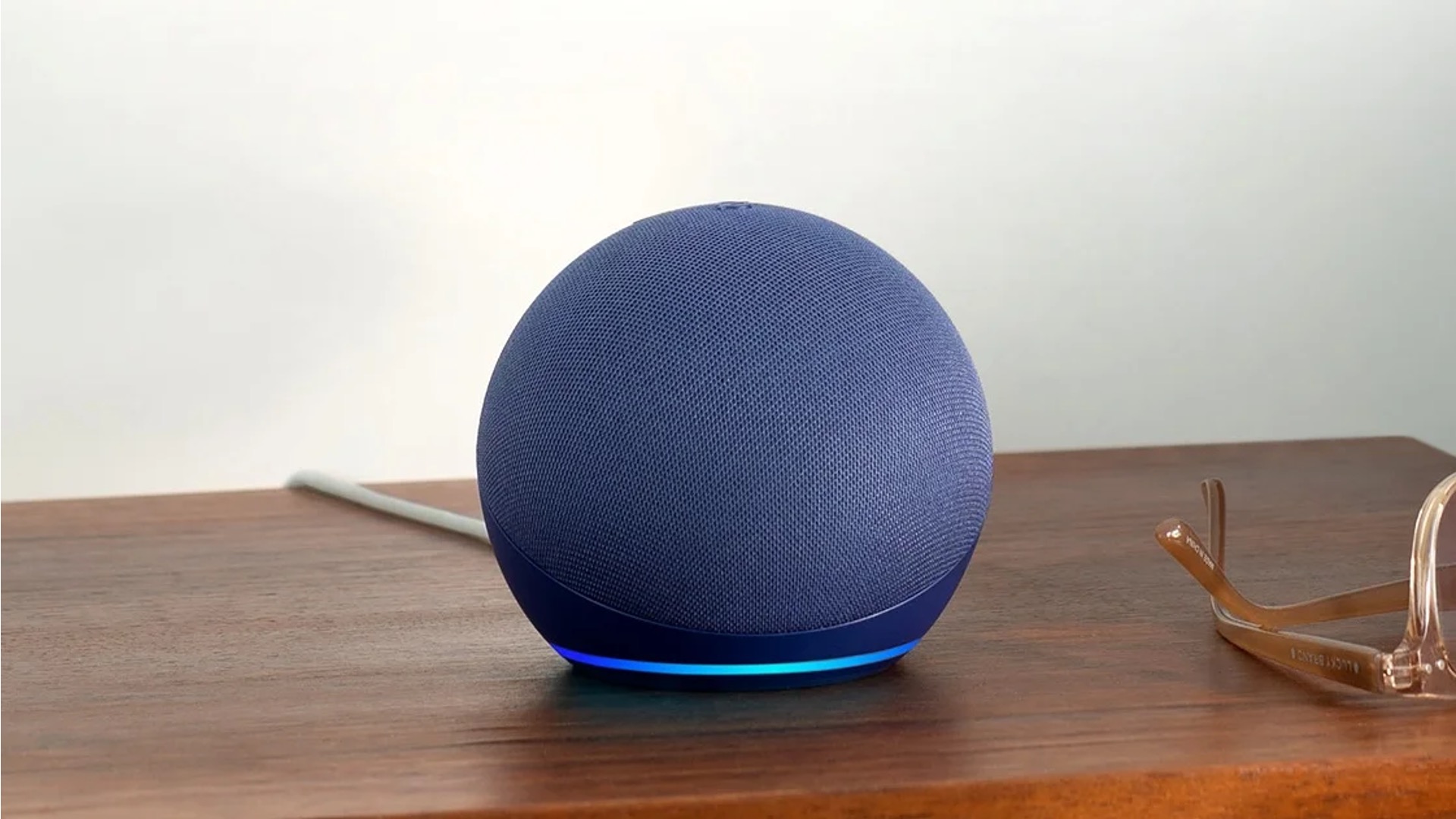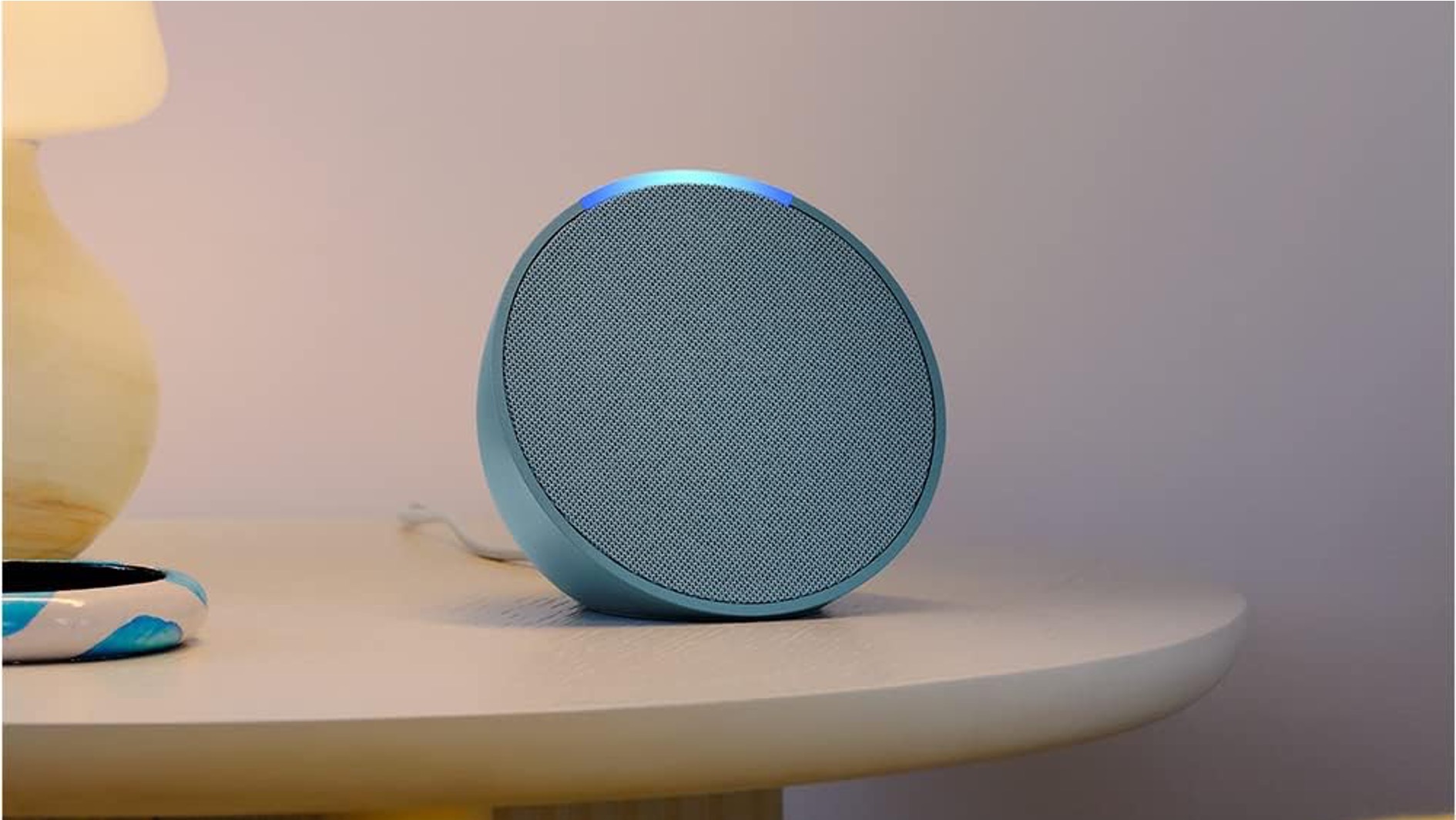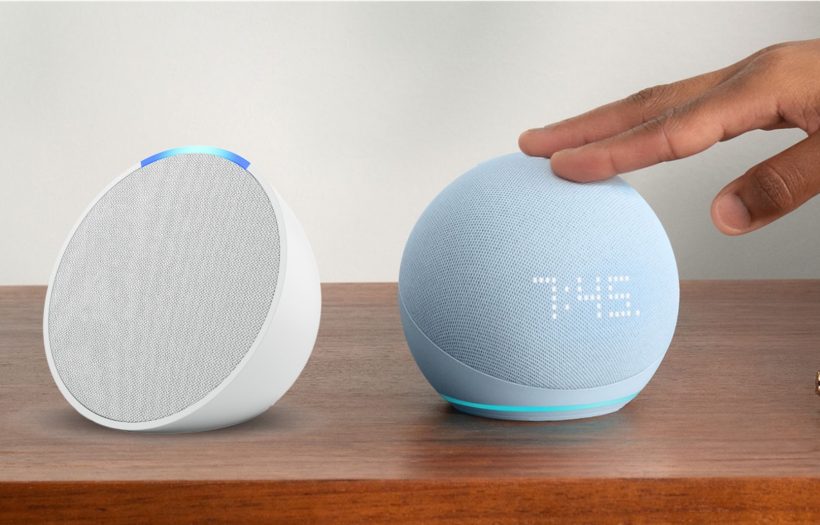The Echo Pop and Echo Dot (5th Generation) are two popular Amazon smart home speakers that are designed for integration with Alexa. Both devices come in similar sizes and have a modern, rounded shape designed to fit in with home decor. The Echo Dot speaker has a spherical shape while the Echo Pop has a semi-circle design and is suited for more compact and smaller spaces. Both speakers are designed as a smart home speaker with the Echo Dot being able to deliver slightly louder sound performance.
The Echo Dot (5th generation) also comes with additional features such as touch controls, a built-in LED clock, and a temperature sensor, which are not present in the Echo Pop. The temperature sensor is a rather neat addition because it allows you to set your device routine with Alexa based on the temperature of your room, such as turning on a smart fan if the temperature gets too hot.
Both the Echo Pop and the Echo Dot (5th Generation) allow you control music with your voice and you can use Alexa to play music, audiobooks and podcasts directly from Apple Music, Spotify or Pandora. Both speakers are also powered by the latest Neural Edge processor which allows for faster response time and processing. These speakers also come with handy touch controls at the top of the speaker for you to snooze alarms or take phone calls.
The Echo Dot (5th Generation) is available in deep sea blue, charcoal or glacier white colors while the Echo Pop is available in four different colors including charcoal, glacier white, lavender bloom and midnight teal colors.

Comparing the Specs
| Specification | Echo Pop (1st Generation) | Echo Dot (5th Generation) |
|---|---|---|
| Built-In Speakers | Yes | Yes |
| Voice Assistant | Alexa | Alexa |
| Wireless Connectivity | Wi-Fi, Bluetooth | Wi-Fi, Bluetooth |
| Power Source | Plug-in | Plug-in |
| Display Screen | No | LED Clock available |
| Product Height | 3.58 inches | 3.532 inches |
| Product Width | 3.91 inches | 3.937 inches |
| Product Weight | 0.4387 pounds | 0.75 pounds |
| Number of Microphones | 1 Mic Array | 1 Mic Array |
| Network Connectivity | Wi-Fi and Bluetooth | Wi-Fi and Bluetooth |
| Color Options | 4 color options | 3 color options |
| Motion Sensor | No | Yes |
| Additional Features | Compact design, smart home control, light bar for privacy, sustainable materials | Improved audio, temperature and motion-detection sensors, sustainable materials |
Both models offer similar basic features like built-in Alexa, Bluetooth and Wi-Fi connectivity and a plug-in power source. However, the Echo Dot (5th Generation) has slightly better audio quality than the Echo Pop, and comes with temperature and motion-detection sensors that can help in daily tasks and planning your routine.
Sound Performance Comparison
In terms of sound performance, both speakers deliver relatively good sound but we found that the Echo Dot delivers more immersive sound with a warmer frequency response. The Echo Pop has a 1.95-inch front speaker, while the Echo Dot 5th Gen features a slightly smaller 1.73-inch speaker. Despite the size difference, the Echo Dot’s spherical design is optimized for sound projection which immersive audio that fills the room. It also has slightly better bass response than the Echo Pop.
The Echo Pop is loud enough to fill a regular-sized room but lacks the range of the Echo Dot, including the warmth and bass produced by the Echo Dot. Music soundtracks with a lot of loud vocals can sound harsh and muddled on the Echo Pop, making the Echo Dot the stronger choice for those who want to listen to vocal performances such as live jazz. The Echo Pop gets a little muddy when blasting its volume, while the Echo Dot’s 360-degree design helps push the sound to all corners of the room and reduces distortion.
We generally preferred the sound signature of the Echo Dot (5th generation) speaker because it delivers crisper highs and better bass performance. Both speakers can handle high volume levels relatively well although there is some distortion at max volume levels. We would say that the Echo Dot is a more “musically-inclined” speaker while the Echo Pop works great for simpler tasks such as telling the weather or reading audiobooks.
While the Echo Pop is technically a larger speaker than the Echo Dot, we found that the Echo Dot’s sphere shape results in stronger bass and a wider soundstage. The Echo Dot delivers richer and more room-filling sound compared to the Echo Pop and we really liked playing EDM, rock and live jazz music genres through the speaker (it sounds much warmer and all-rounded as compared to the Echo Pop speaker).

Design and Specs
Both devices are equipped with Amazon’s Neural Edge processor and support Matter controllers for smart home integration. Both speakers include features like Adaptive Listening, Preferred Speaking Rate, and Notify When Nearby, which provides added customization when using the speaker with voice commands. The Echo Dot 5th Gen, however, includes additional features like a temperature sensor and a built-in LED clock with ambient light sensors that can be useful if you need to use the speaker to control smart home appliances such as lights or fans.
The Echo Dot’s spherical shape is engineered for uniform 360 degree sound dispersion, making it a versatile choice suitable for placement anywhere in a room. Its design is not just about looks but also about enhancing the overall sound experience. By contrast, the Echo Pop has a semi-circle design which is better for directional audio projection and is more suited for specific placements like corners or against walls. This aspect of the Echo Pop’s design means that it may be more suitable for certain spaces or audio setups.
Although the Echo Pop lacks some features that the Echo Dot (5th Generation has), both speakers offer smart speaker functionalities like setting timers, checking the weather, and controlling smart home devices. The Echo Pop also has the added feature of Eero network support, allowing it to extend WiFi coverage in conjunction with a compatible Eero WiFi network.
The Verdict?
We felt that the Echo Dot (5th generation) was overall a better speaker compared to the Echo Pop. The Echo Dot delivered much warmer and crisper sound performance, and has slightly better bass due to its spherical shape. The Echo Dot speaker can also be placed virtually anywhere inside your room and you can hear it with no difficulty due to its 360 degree sound, while the Echo Pop speaker needs to be angled from a corner of your room to be heard. We also liked the fact that the Echo Dot speaker comes with a built-in LED clock and temperature sensor, both of which are really useful features if you need to set the alarm. That being said, both speakers allow you control music with your voice and use Alexa to play music and audiobooks or check the weather.
While we recommend the Echo Dot (5th Generation) speaker as our top pick, the Echo Pop is still a stylish option for those on a budget and it comes with virtually the same features that you get with the Echo Dot, except for the LED clock and temperature sensor.

